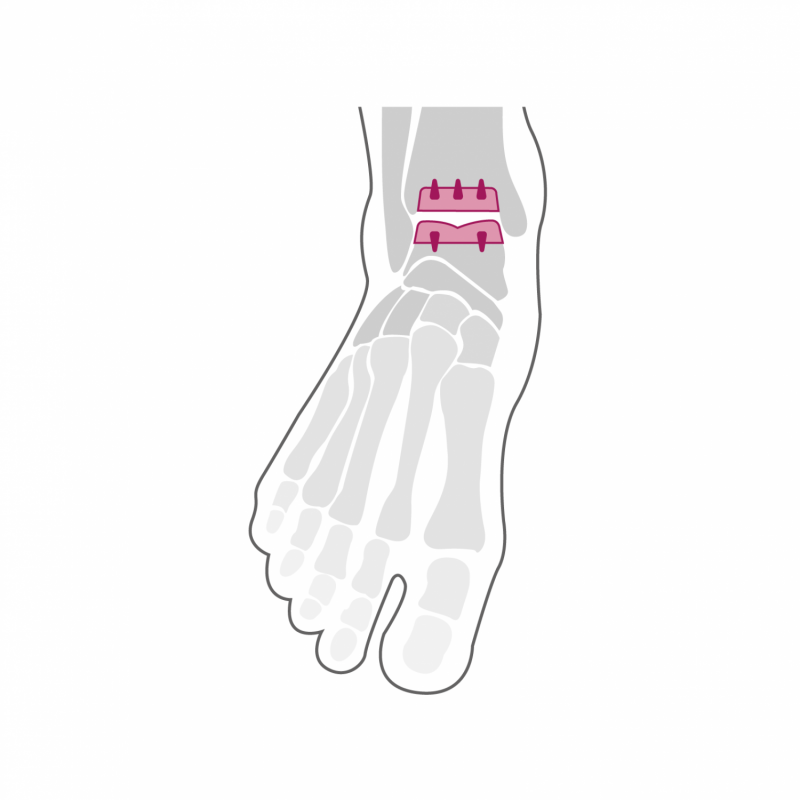Total ankle replacement

Replacing the ankle joint surfaces with a total prosthesis is a very interesting alternative to arthrodesis. The generation of total ankle prostheses currently available was developed about thirty years ago and the progress made both in design and implantation technique has made it possible to obtain very encouraging results. The advantage of fitting a prosthesis is the maintenance and even in some cases the improvement of joint mobility. The replacement of joint surfaces affected by osteoarthritis also effectively combats the pain experienced when walking.
The current prostheses are implanted without cement and are fixed in the bone by a system called "press fit", an implantation of the components by pressure in the bone. The surfaces of the prosthesis in contact with the bone are porous and promote bone integration. Current designs allow for minimal bone cuts and respect the ankle anatomy.
Certain anatomical and biological criteria must however be respected in order to obtain an optimal result. The bone quality must be sufficient, and the function of the muscles of the foot and leg must be intact. A situation after an infection or a major deformation of the ankle anatomy are absolute contraindications. In case of moderate deformities, additional procedures such as osteotomies in the calcaneus or above the ankle can be combined in order to obtain an anatomical axis of the hindfoot.
The installation of a total ankle prosthesis requires the wearing of a removable plastered boot for 6 weeks, two weeks in total foot discharge and 4 weeks with a load of 15 kg. Once the components are well integrated into the bone, resumption of activities such as hiking, biking, swimming, golf, downhill and cross-country skiing as well as double tennis are possible.
The total ankle prosthesis, like that of the knee or hip, has a limited lifespan. The type of prostheses currently used can remain in place between 12 and 15 years, although this is different from case to case. If the components become unstable - we discuss the idea loosening - revision prostheses are available to make one or even two changes depending on the bone stock available. If a change in the prosthesis is no longer possible, an ankle arthrodesis is still possible. To fill the "hole" left in the bone by the prosthetic components, the arthrodesis must then be performed using a bone graft taken from the pelvis.
